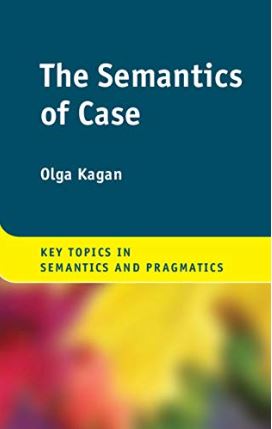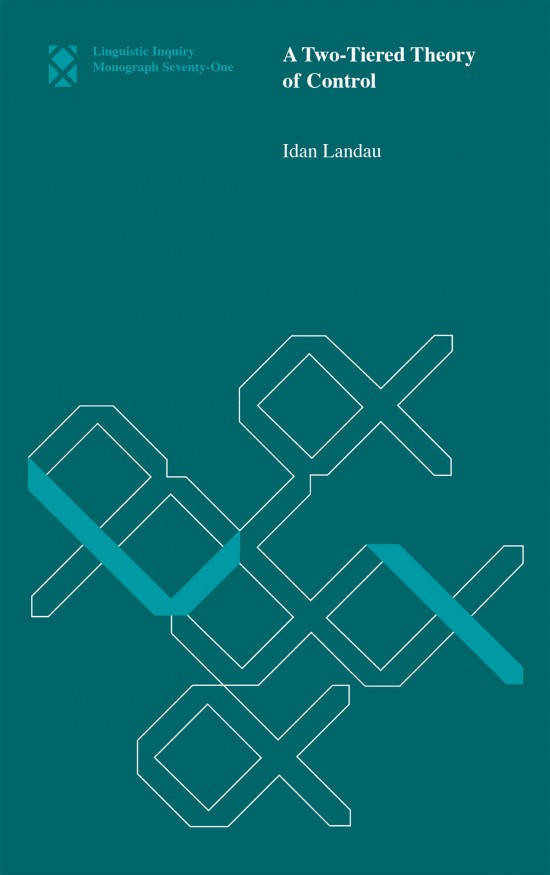Control in adjuncts involves a complex interaction of syntax, semantics, and pragmatics, which so far has resisted systematic analysis. In this book, Idan Landau offers the first comprehensive account of adjunct control. Extending the framework developed in his earlier book, A Two-Tiered Theory of Control, Landau analyzes ten different types of adjuncts and shows that they fall into two categories: those displaying strict obligatory control (OC) and those alternating between OC and nonobligatory control (NOC). He explains how and why adjuncts shift between OC and NOC, unifying their syntactic, semantic, and pragmatic properties.
Landau shows that the split between the two types of adjuncts reflects a fundamental distinction in the semantic type of the adjunct: property (OC) or proposition (NOC), a distinction independently detectable by the adjunct's tolerance to a lexical subject. After presenting a fully compositional account of controlled adjuncts, Landau tests and confirms the specific configurational predictions for each type of adjunct. He describes the interplay between OC and NOC in terms of general principles of competition—both within the grammar and outside of it, in the pragmatics and in the processing module—shedding new light on classical puzzles in the acquisition of adjunct control by children. Along the way, he addresses a range of empirical phenomena, including implicit arguments, event control, logophoricity, and topicality.
Ariel Cohen, Something out of Nothing: The Semantics and Pragmatics of Implicit Quantification (Brill, 2020)

Some sentences contain no overt quantifier, yet are interpreted quantificationally, e.g., Plumbers are available (entailing that some plumbers are available), or Plumbers are intelligent (whose entailment is less clear, but seems to be saying that a large number of plumbers are intelligent). Where does the quantifier come from? In this book, Ariel Cohen makes the novel proposal that the quantifier is not simply an empty category, but is generated by reinterpretations mechanisms, which are governed by well specified principles. He demonstrates how the puzzling and sometimes mysterious properties of such sentences can be naturally derived from the reinterpretation mechanisms that generate them. The resulting picture has substantial implications that language contains hidden elements, underlying its surface structure.

Olga Kagan, The Semantics of Case (Cambridge University Press, 2020)
The phenomenon of case has long been a central topic of study in linguistics. While the majority of the literature so far has been on the syntax of case, semantics also has a crucial role to play in how case operates. This book investigates the relationship between semantics and case-marking in the languages of the world, exploring a range of phenomena in which case-assignment is affected by (or affects) meaning. By bringing together data from a wide range of languages, representing different language families, a cross-linguistic picture emerges of the correlation between case and meaning. Different approaches to the phenomena are considered, including both syntactic and semantic analyses, and the question is raised as to whether case can be treated as meaningful, ultimately helping us shed light on the broader connections between grammar and meaning and, moreover, grammar and the human cognition.
Idan Landau, A Two-Tiered Theory of Control (MIT Press, 2015)
This book revives and reinterprets a persistent intuition running through much of the classical work: that the unitary appearance of Obligatory Control into complements conceals an underlying duality of structure and mechanism. Idan Landau argues that control complements divide into two types: In attitude contexts, control is established by logophoric anchoring, while in non-attitude contexts it boils down to predication. This distinction is also syntactically represented: Logophoric complements are constructed as a second tier above predicative complements. The theory derives the obligatory de se reading of PRO as a special kind of de re attitude without ascribing any inherent feature to PRO. At the same time, it provides a principled explanation, based on feature transmission, for the agreement properties of PRO, which are stipulated on competing semantic accounts. Finally, it derives a striking universal asymmetry: the fact that agreement on the embedded verb blocks control in attitude contexts but not in non-attitude contexts.
Olga Kagan, Scalarity in the Verbal Domain: The Case of Verbal Prefixation in Russian (Cambridge University Press, 2015)

Verbal prefixes in Slavic languages remain an intricate and puzzling phenomenon, raising questions about whether their behavior is governed by a systematic pattern, and if their attachment is subject to any kind of uniform semantic system. Olga Kagan offers a new unified analysis of Russian verbal prefixes which combines a formal semantic approach with detailed discussion of data. The book addresses two vital issues, both of which play an important role in modern linguistic research: the role of scalarity in natural language and, more specifically, within the verbal domain; and Slavic verbal prefixation. Accessibly written and illustrated with numerous examples, Scalarity in the Verbal Domain is important reading for researchers and students of formal semantics, cognitive linguistics and Slavic languages.
The subject of nonfinite clauses is often missing, and yet is understood to refer to some linguistic or contextual referent (e.g. 'Bill preferred __ to remain silent' is understood as 'Bill preferred that he himself would remain silent'). This dependency is the subject matter of control theory. Extensive linguistic research into control constructions over the past five decades has unearthed a wealth of empirical findings in dozens of languages. Their proper classification and analysis, however, have been a matter of continuing debate within and across different theoretical schools. This comprehensive book pulls together, for the first time, all the important advances on the topic. Among the issues discussed are: the distinction between raising and control, obligatory and nonobligatory control, syntactic interactions with case, finiteness and nominalization, lexical determination of the controller, and phenomena like partial and implicit control. The critical discussions in this work will stimulate students and scholars to further explorations in this fascinating field.